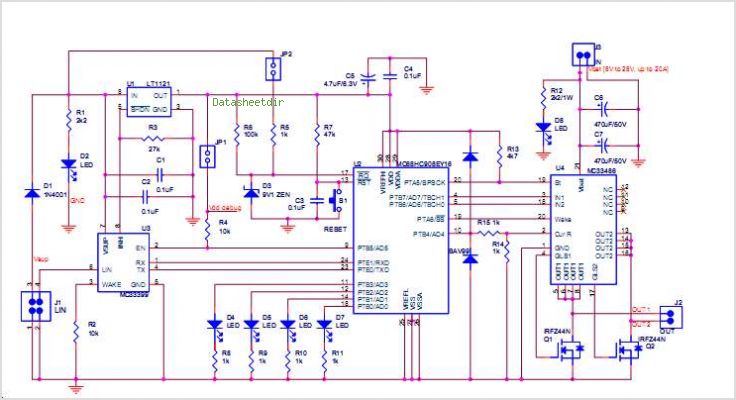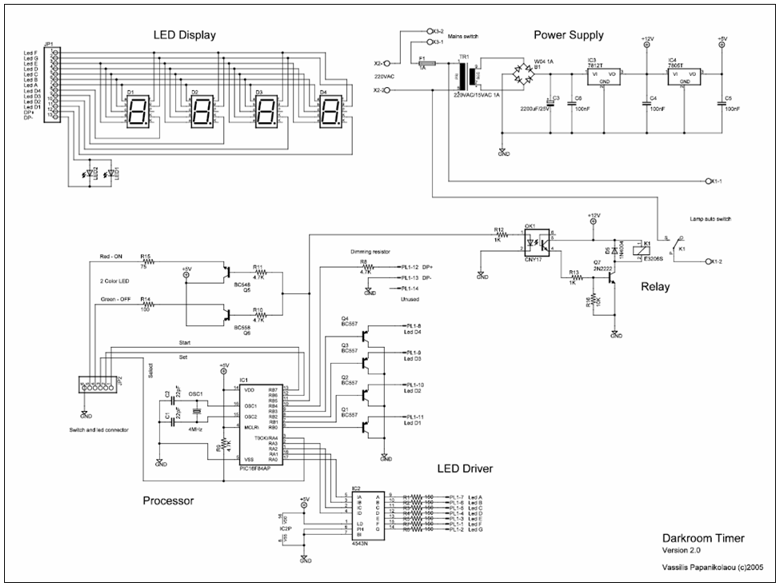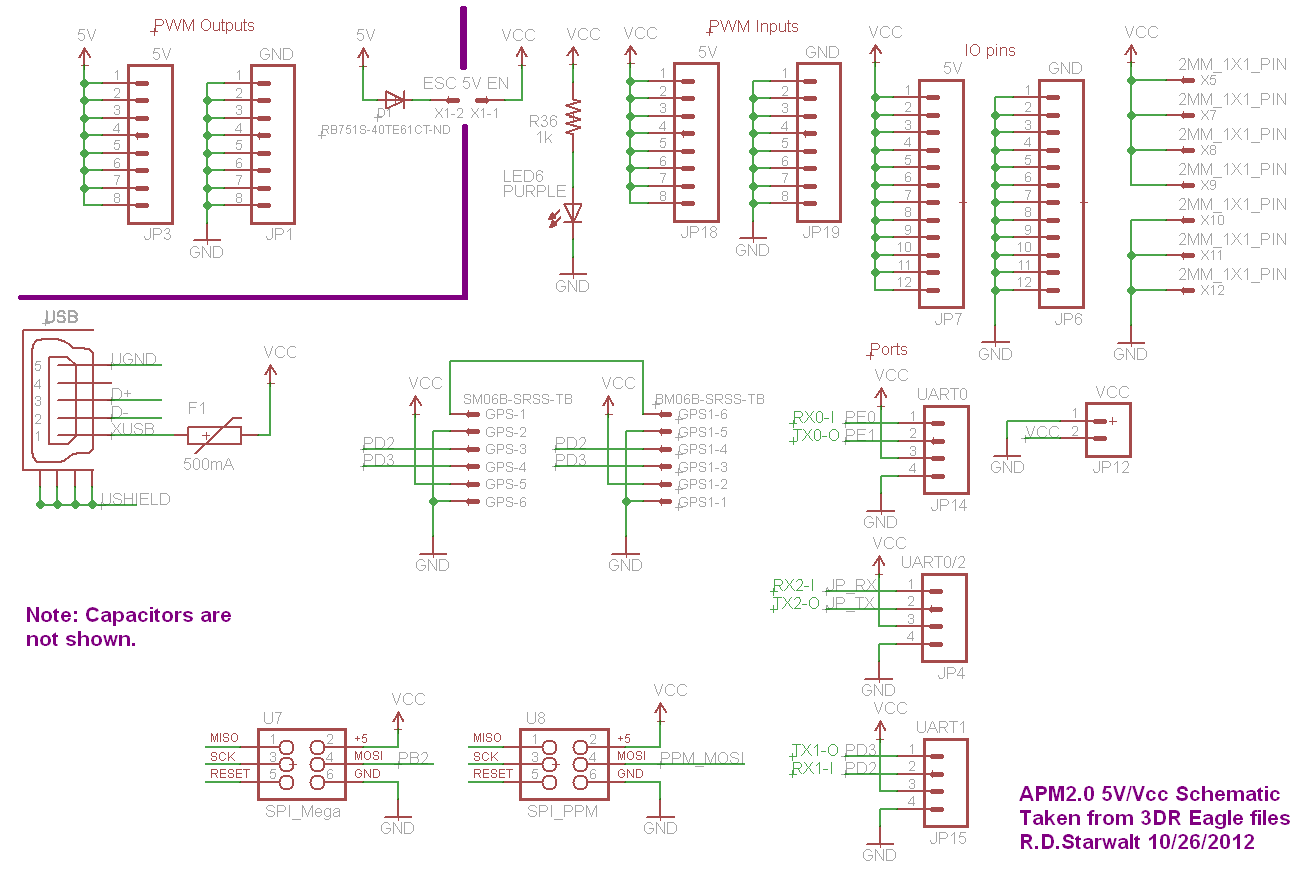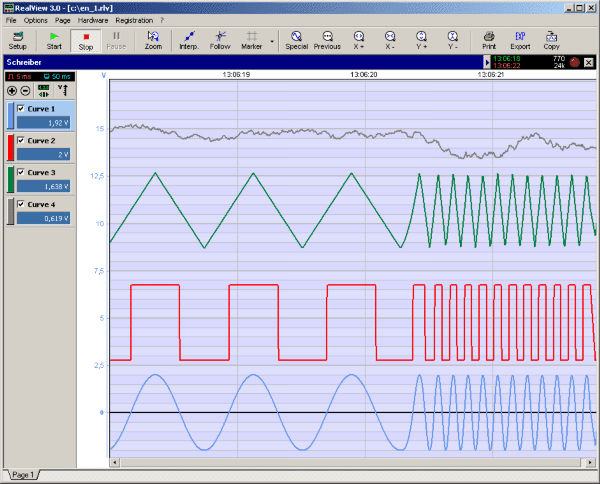
AudioWave 2.0
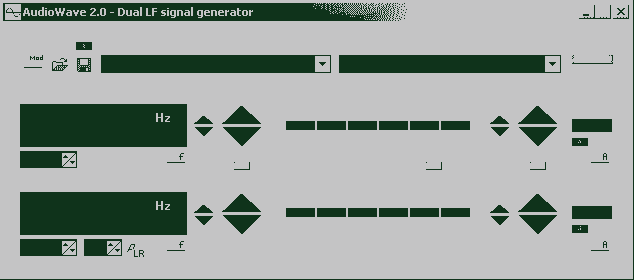
With AudioWave 2.0 your soundcard becomes a comfortable LF-signal-generator, which produces signals from 1Hz to 20 kHz with a resolution of 1 Hz. Phase shift between left and right channel is adjustable from 180° to +180° and an attenuator can be used for steps of 0dB, -3dB, -6dB, -10 dB, -20 dB, -30dB. Frequency, level and attenuation can be adjusted independently for left and right channel and optionally left and right channel can be chained. AudioWave produces sine and noise signals, as well as modulated signals. Automatic frequency and level progress is programmable. Complex adjustment can be stored as presets with clear names. More: * Frequency adjustment 1Hz...20 kHz; 1 Hz resolution * Direct frequency input via keyboard * Soft frequency change * Independent or chained control of frequency, level and attenuation for left and right channel * Channel mute function
The AudioWave 2.0 system transforms a standard soundcard into a versatile low-frequency (LF) signal generator capable of producing audio signals ranging from 1 Hz to 20 kHz with a precision resolution of 1 Hz. This capability is particularly useful for audio testing, sound design, and various applications in acoustics and electronics.
The circuit architecture of AudioWave 2.0 allows for independent control of the left and right audio channels. Each channel features adjustable parameters, including frequency, level, and attenuation. The phase shift between the two channels can be finely tuned, allowing for adjustments from -180° to +180°. This feature is essential for creating spatial audio effects and ensuring proper stereo imaging in audio playback.
The attenuator circuit provides multiple fixed attenuation levels: 0 dB, -3 dB, -6 dB, -10 dB, -20 dB, and -30 dB. This allows for precise control over the output signal's amplitude, accommodating various output requirements and preventing distortion during signal generation.
AudioWave 2.0 also supports chaining of channels, enabling synchronized control of both left and right outputs. This is particularly advantageous when generating complex waveforms or when a unified output is required for a specific application.
Signal generation capabilities include sine waves and noise signals, alongside modulated signals, expanding the utility of the device in sound synthesis and testing environments. The programmable automatic frequency and level progression feature allows users to create dynamic soundscapes or conduct automated testing procedures without manual intervention.
User interaction is facilitated through direct frequency input via a keyboard interface, allowing for quick adjustments and precise tuning. Soft frequency change functionality ensures smooth transitions between frequencies, which is vital for applications requiring gradual shifts in sound.
Complex configurations and adjustments can be stored as presets, each with a clear and descriptive name, enhancing usability and efficiency during repeated tasks or experiments. Additionally, a channel mute function is included, providing the ability to silence one or both channels without altering the overall setup.
Overall, AudioWave 2.0 serves as a powerful tool for audio engineers, sound designers, and researchers, offering a comprehensive suite of features for low-frequency signal generation and manipulation.With AudioWave 2.0 your soundcard becomes a comfortable LF-signal-generator, which produces signals from 1Hz to 20 kHz with a resolution of 1 Hz. Phase shift between left and right channel is adjustable from 180° to +180° and an attenuator can be used for steps of 0dB, -3dB, -6dB, -10 dB, -20 dB, -30dB.
Frequency, level and attenuation can be adjusted independently for left and right channel and optionally left and right channel can be chained. AudioWave produces sine and noise signals, as well as modulated signals. Automatic frequency and level progress is programmable. Complex adjustment can be stored as presets with clear names. * Frequency adjustment 1Hz...20 kHz; 1 Hz resolution * Direct frequency input via keyboard * Soft frequency change * Independent or chained control of frequency, level and attenuation for left and right channel * Channel mute function 🔗 External reference
The AudioWave 2.0 system transforms a standard soundcard into a versatile low-frequency (LF) signal generator capable of producing audio signals ranging from 1 Hz to 20 kHz with a precision resolution of 1 Hz. This capability is particularly useful for audio testing, sound design, and various applications in acoustics and electronics.
The circuit architecture of AudioWave 2.0 allows for independent control of the left and right audio channels. Each channel features adjustable parameters, including frequency, level, and attenuation. The phase shift between the two channels can be finely tuned, allowing for adjustments from -180° to +180°. This feature is essential for creating spatial audio effects and ensuring proper stereo imaging in audio playback.
The attenuator circuit provides multiple fixed attenuation levels: 0 dB, -3 dB, -6 dB, -10 dB, -20 dB, and -30 dB. This allows for precise control over the output signal's amplitude, accommodating various output requirements and preventing distortion during signal generation.
AudioWave 2.0 also supports chaining of channels, enabling synchronized control of both left and right outputs. This is particularly advantageous when generating complex waveforms or when a unified output is required for a specific application.
Signal generation capabilities include sine waves and noise signals, alongside modulated signals, expanding the utility of the device in sound synthesis and testing environments. The programmable automatic frequency and level progression feature allows users to create dynamic soundscapes or conduct automated testing procedures without manual intervention.
User interaction is facilitated through direct frequency input via a keyboard interface, allowing for quick adjustments and precise tuning. Soft frequency change functionality ensures smooth transitions between frequencies, which is vital for applications requiring gradual shifts in sound.
Complex configurations and adjustments can be stored as presets, each with a clear and descriptive name, enhancing usability and efficiency during repeated tasks or experiments. Additionally, a channel mute function is included, providing the ability to silence one or both channels without altering the overall setup.
Overall, AudioWave 2.0 serves as a powerful tool for audio engineers, sound designers, and researchers, offering a comprehensive suite of features for low-frequency signal generation and manipulation.With AudioWave 2.0 your soundcard becomes a comfortable LF-signal-generator, which produces signals from 1Hz to 20 kHz with a resolution of 1 Hz. Phase shift between left and right channel is adjustable from 180° to +180° and an attenuator can be used for steps of 0dB, -3dB, -6dB, -10 dB, -20 dB, -30dB.
Frequency, level and attenuation can be adjusted independently for left and right channel and optionally left and right channel can be chained. AudioWave produces sine and noise signals, as well as modulated signals. Automatic frequency and level progress is programmable. Complex adjustment can be stored as presets with clear names. * Frequency adjustment 1Hz...20 kHz; 1 Hz resolution * Direct frequency input via keyboard * Soft frequency change * Independent or chained control of frequency, level and attenuation for left and right channel * Channel mute function 🔗 External reference
